- Remove Article filter Article
- Remove Archaeology filter Archaeology
- Remove Dialects and arts filter Dialects and arts
- Remove Churches, Cloisters, Christianity filter Churches, Cloisters, Christianity
- Remove Livelihood and Craftsmanship filter Livelihood and Craftsmanship
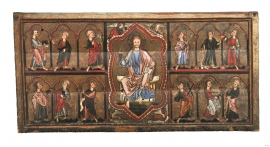
Church Art – a Message in Pictures
In the still and dim church interiors of the Middle Ages the performances of belief came to life in the gleam from the wax candles. Here the essential articles of faith were presented, here the church was presented through holy men and holy women and here the events from the Gospels were told: the angels with Maria, the birth of the baby Jesus, the Three Wise Men, the history of the drama of the Passion and the victorious Christ.

Sailing Sloops and Boat Building
Marine activities expanded greatly throughout the 19th century, and provided a livelihood for many people. Fishing and shipping were probably the subsidiary activities which had greatest economic significance throughout the century. Marine activities brought, literally speaking, wind into the sails of many rural districts in Hordaland during that period.
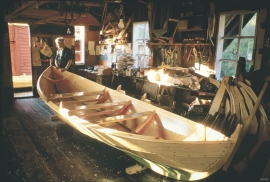
The Wooden Boat
Craftsmanship through two thousand years

The Warp-Weighted Loom- A thousand year tradition in weaving
The art of spinning, the art of weaving and the art of dyeing wool is knowledge which has been an important resource in the natural household for several thousand years. And the art of weaving still fascinates new generations.
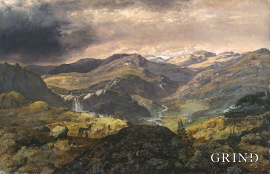
The Artist and his Experience of Nature
På ferd mot vest over Hardangervidda opplever vi det dramatiske panoramaet når vidda går over i djupe bergkløfter og høge fossefall – eit utsyn som har fascinert kunstnarane.
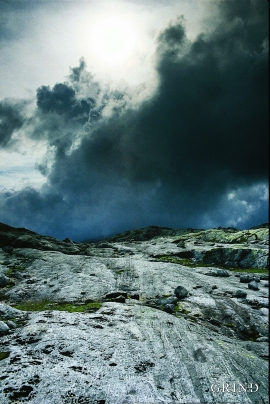
The Precambrian Era and Precambrian basement rocks
Almost nothing is as solid, unchangeable and stable as the Norwegian Precambrian basement rocks. Here, there are no volcanic eruptions or violent earthquakes that can cause natural catastrophes. But, it has not always been that way! There have been periods when glowing hot lava flowed over it or when large parts of the Precambrian basement have "taken a beating", both in Precambrian times and during the Caledonian mountain-building event.

Hordaland as high as the Himalayas- the Caledonian mountain chain
The Himalaya Mountain Chain is being formed by the Indian continental plate colliding w the Asian continent. This happens because the earth’s continental plates are constantly moving in relation to each other. Sometimes they crash together and form large collision zones or mountain chains. The collision between India and the Asian continent has created the world's highest mountain and thickest continental crust. But the creation of the Himalaya mountain chain is essentially just a repeat of what happened more than 400 million years ago when Western Norway and Greenland collided and formed the Caledonian mountain range. That mountain-building event caused quite dramatic changes in topography, climate and crustal thickness, and resulted in both volcanism and a lot of earthquake activity. In addition,
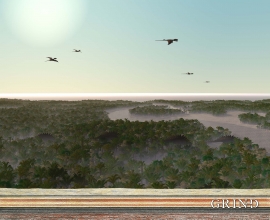
The mountain chain disappears – and the dinosaurs arrive!
The Caledonian mountain chain is an example of how plate movements and continental drift can cause collisions and the upheaval of huge mountain chains. After the horizontal compressional forces ceased, the forces of gravity, wind and water took over and started the process of eroding away the mountain chain. But, nearer to our time the land rose up again to a plateau landscape in the east which slanted down toward the ocean in the west!
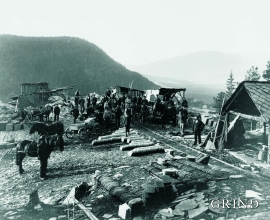
Stone quarry in Hordaland
Hordaland has been through several "Stone Ages". The first was in the real Stone Age, with Bømlo as its centre. Hard stone as tools and weapons was the normal occupation for Bømlo folk. The next started a ways into the 1800s. Building stone and cobblestones in the street became popular in cities throughout the country. The last stone age is just about twenty years old - after a long period of dominance by asphalt and cement, natural stone has again become desirable in streets and squares, in roads and as building facades.
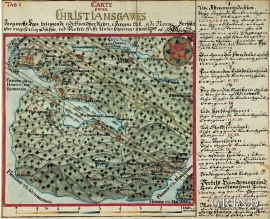
Mining in Hordaland
Ølve has the oldest known mines in Hordaland. In 1642, privilege was granted by the king to build an iron works in Jernsmuget on the property of Lilledals Farm, and five years later a copper works on the same property. Operations were suspended in 1673. Mining resumed again in the municipality in the 1750s. Also this time, in the region of Ølve.


